Before you start: if you’re unfamiliar with the principles of statistical SEO split-testing and how SplitSignal works, we’re suggesting you start here or request a demo of SplitSignal.
First, we asked our Twitter followers to vote:
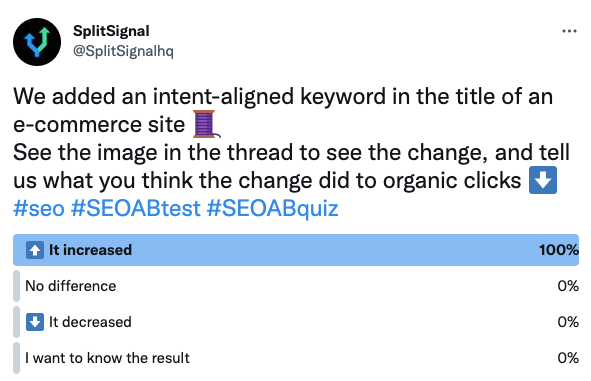
This time the majority of our followers were POSITIVE! Read further to find out why.
But first, let’s see what SEO professionals had to say about the result of this test:
Alpana Chand, Digital producer- Marketing at Coalition Technologies:
The clicks will certainly go up.
From a consumer’s pov, the title—Vintage Rugs & Carpets for Sale is precise, attractive and more accurate as compared to just Rugs & Carpets—Pamono.
From personal experience I feel adding appropriate, informational, to-the-point title key words to the title provides traffic boost to websites.
However one has to use them wisely and not over do it.
Vladimir Gertner, Senior Project Manager at Soft Road Apps:
I would say it goes up. There’s no reason to believe this change would hurt rankings, while at the same time people might react positively to the addition.
However, the old title was already matching the intent quite well, so the change could be smaller.
Jason Zimelman, Director, SEO and Content Marketing at StatBid:
I expect growth—the pages should rank better for any search terms that include “vintage” and “sale,” and should not negatively impact any existing rankings.
Follow us on LinkedIn to share your thoughts on the next test.
The Case Study
This SplitSignal test looks into the effect of adding intent-specific words within the title tag.
We wanted to see what happens when you add keywords in a title that are very clearly aligned with the intent of the search.
Read on to find out what happened in our search intent keyword-specific title SEO test.
The Hypothesis for adding Search Intent Specific Keywords
For the ecommerce website being evaluated here, the intent for many of the keywords is quite clearly transactional intent.
The hypothesis here is that adding a keyword that very closely aligns with the intent of the search will help get more clicks by a higher click-through rate (CTR) and, therefore also, higher rankings due to better performance.
The keyword added does not actually add any specific descriptor of the product but definitely aligns with the very clear intent of the searches for these types of pages. Google makes a lot of mention of intent in its search rater’s guidelines, so it makes sense that page titles should clearly reflect the intent that the content is targeting.
The words “for sale” are quite clearly associated with what someone would be looking for when they are trying to find a product they want to buy.
The “they want to buy” portion of that statement is quite critical to the hypothesis. This would very likely not work and not be appropriate for research-based search intent, even someone in the commercial investigation/research stage likely is not ready to buy, and so it would not be expected that this term “for sale” would help at all with non-transactional intent searches.
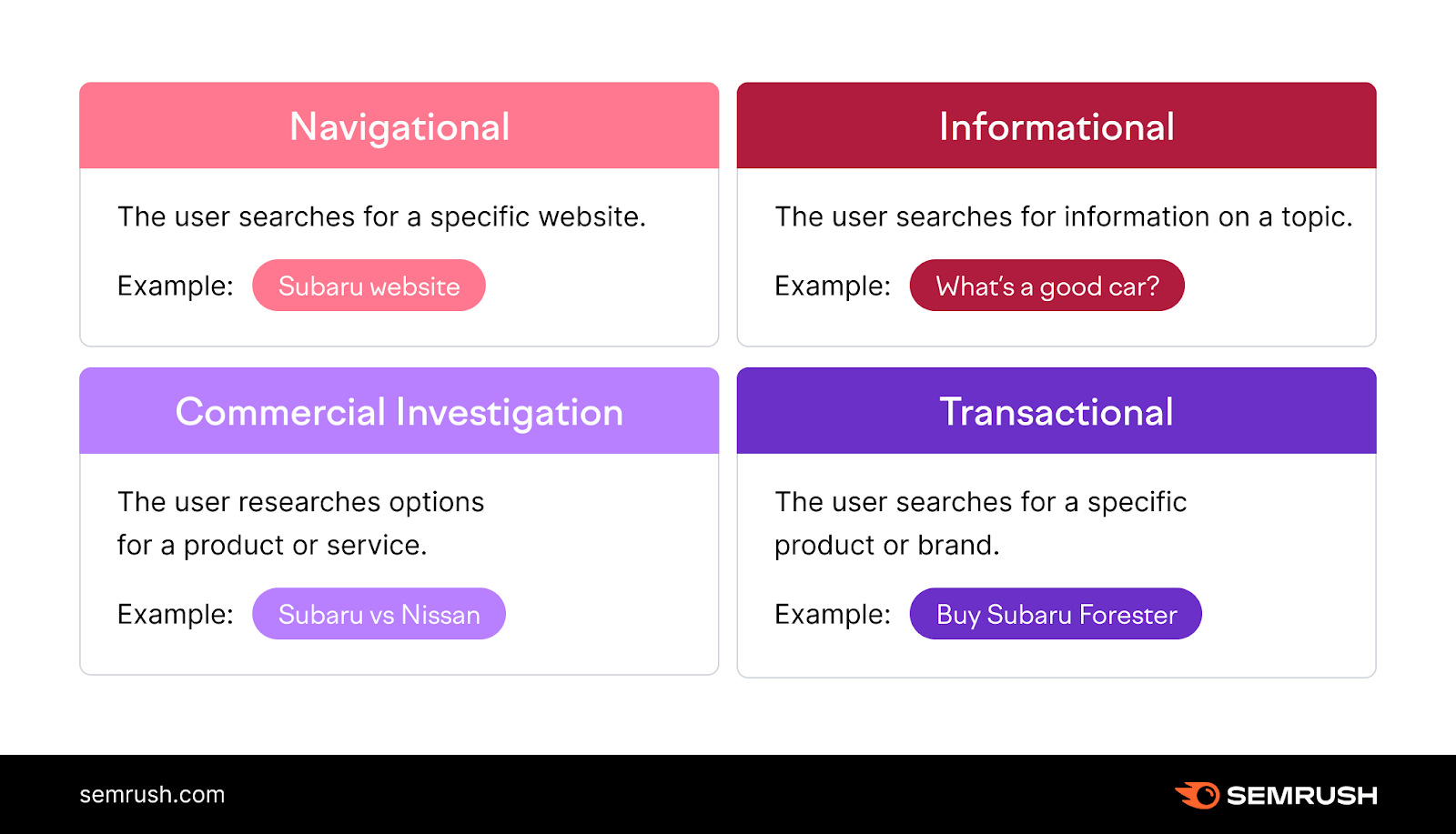
Semrush—What is search intent? A complete guide [3]
The Test— Adding a Search Intent-Specific Keyword in the Title
The test looked at changing the titles with the following format:
Control: TypeH1—Brand
Variant: TypeH1for sale—Brand
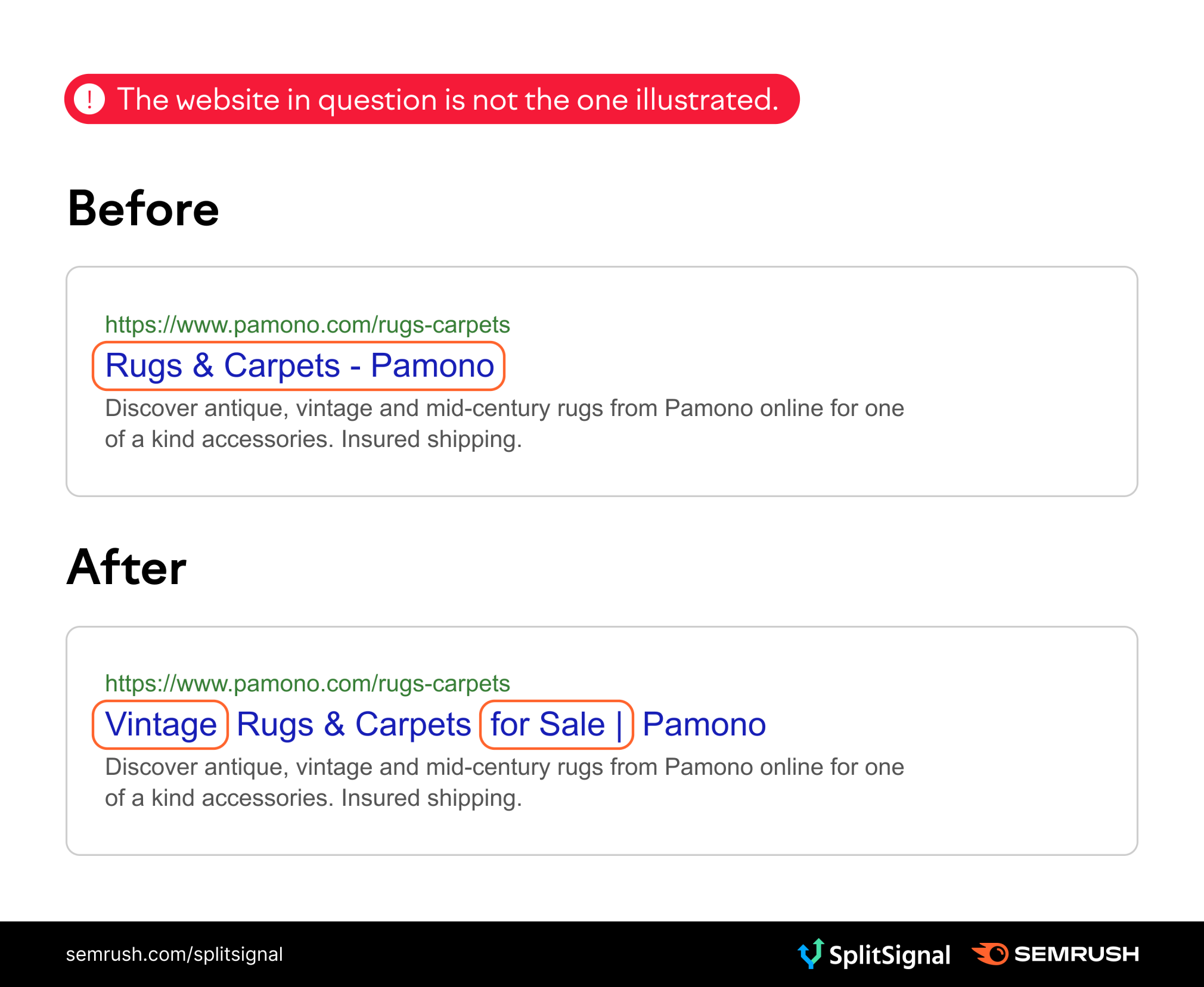
Let’s break down the title into the components and review what each part of the element is about.
- Type
- H1
- For sale
- - Brand
Type
The type used is a descriptor of the product range. However, more generally, it could also be a product category or series of products. In this case, it was a descriptive keyword for this specific series of products.
H1
The title was formed partially by using the exact H1 heading string from the page. This is a concise description of the product.
For sale
The words “for sale” were added to the variant group of page titles and were not apparent in the control group of page titles. This was the experiment, adding the words “for sale” to the title.
Brand
The title also has—Brand—with Brand being the brand name, which in this test case was a single word, appended to the end of the title separated with a—character.
The test conducted was operated on 2800 URLs, of which 1301 were control URLs, 1305 were variation URLs, and 184 URLs were excluded for not meeting the required criteria.
The Results of Adding a Search Intent-Specific Keyword in the Title
The result was quite clearly positive to the tune of 6.8%.
The effect was significant and meaningful, with a confidence level of 97%.
In the graph below, you can see the additional clicks that resulted from the variant URLs going live.
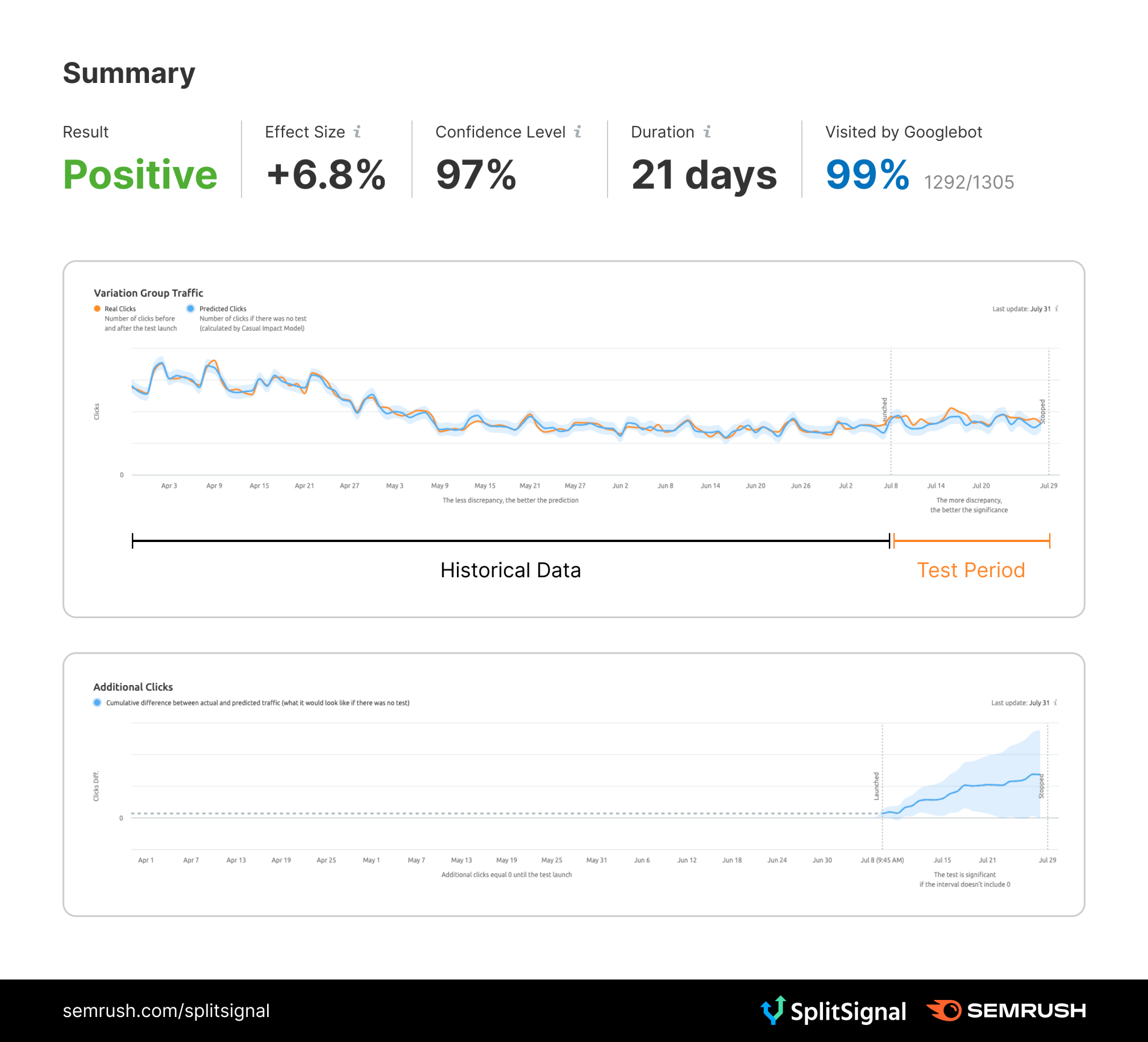
During the period prior to the test going live, you can see that there was a fairly significant drop in traffic to the control and variant URLs (prior to any test going live). After this period, the traffic levels stabilized.
Why—Factors in the Search Intent Title Test
The results are clearly positive and the why is also quite clear—it’s nice when tests are as clear-cut as this!
By adding a keyword in the title that is clearly aligned with the search and SERP intent it stands to reason (my acid test for everything in SEO) that the page would rank higher.
Given that the title clearly aligns with a very strong buying intent, it also stands to reason that the result would get a higher click-through rate.
The additional words “for sale” match both the Search and SERP intent.
Search, and SERP intent are closely related. However, they are specifically different things.
Search intent is the reason someone is searching for something, whereas SERP intent is what Google thinks you are looking for and why.
Usually, these will be closely aligned, but not always.
It is crucial to make sure that you understand both search and SERP intent when you do your keyword research.
The example I give people is—trying to rank an ecommerce product page for a SERP where there are 10 how-to type blog posts—it simply won’t rank even with all of the right traditional SEO metrics.
“But if your page doesn’t satisfy Search Intent, it’s not going to rank.”—Brian Dean
Semrush gives you a tool to instantly analyze search intent within its keyword research tool.
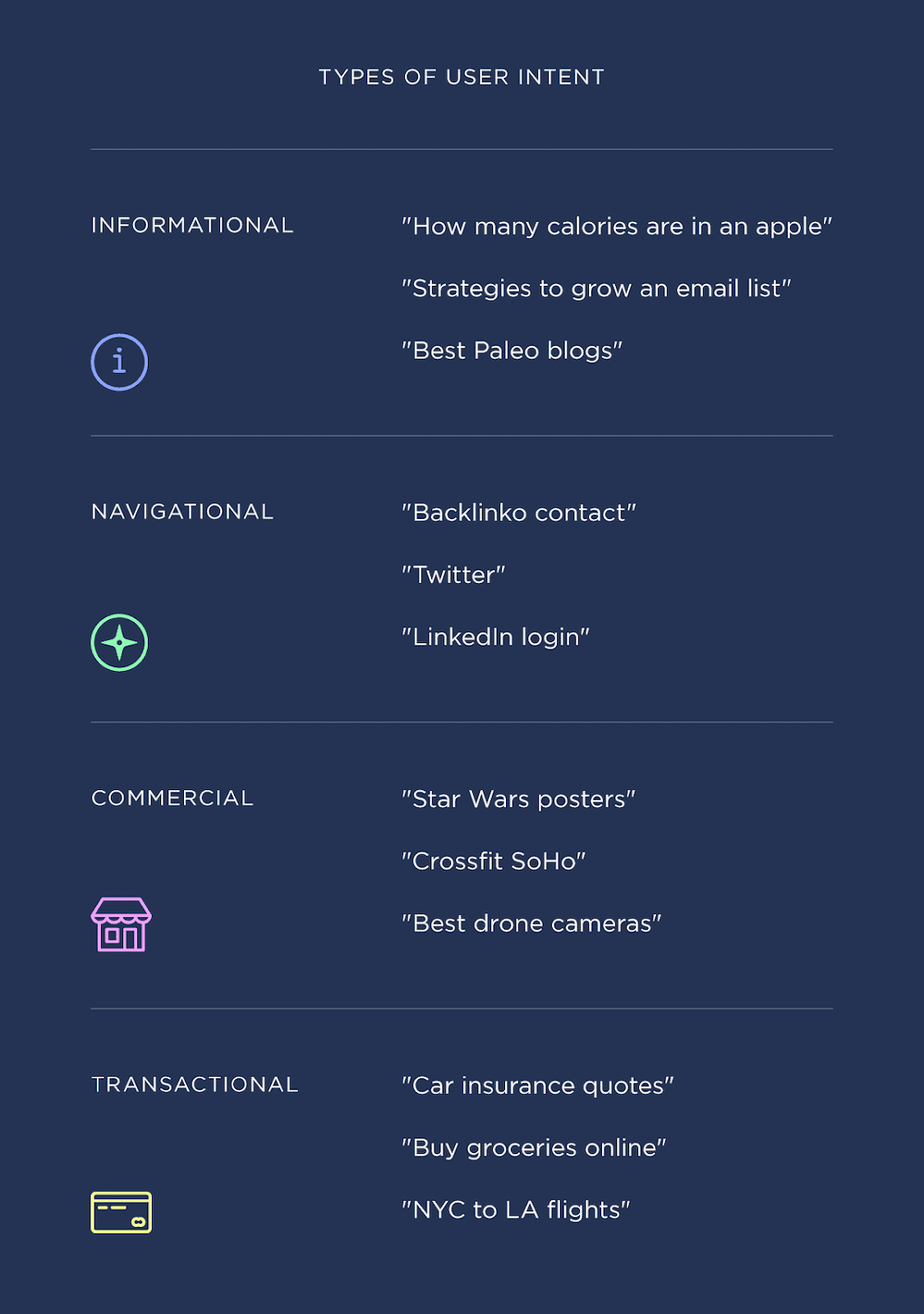
Summary
In this SplitSignal SEO test, we analyzed the effect of adding a search intent-specific keyword to the title.
We analyzed the results between a control and variant group of URLs and found that this test resulted in a 6.8% positive result giving increased clicks.
This SEO test shows the importance of making your content and title closely match and align with the search and SERP intent.
As always, specific SEO changes are situation dependant and what works for one site in one niche may not work for you. This is why SEO testing and continued research are so important. You can use SplitSignal to conduct your own SEO tests.
Love Seeing These Test Results?
Never miss a single one when you subscribe to our emails.


